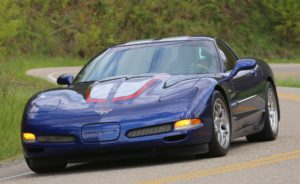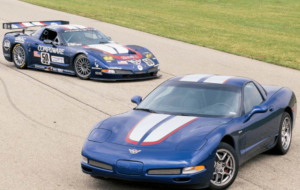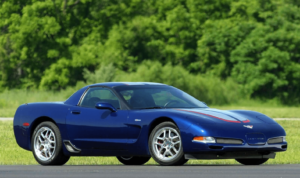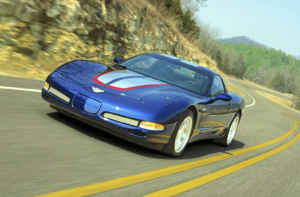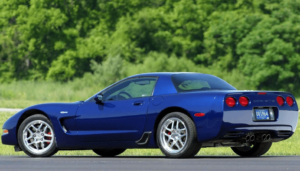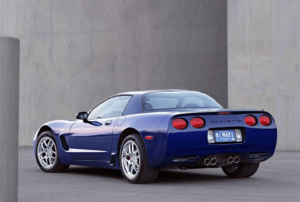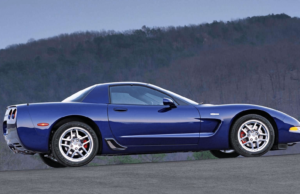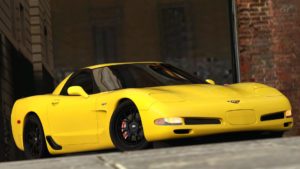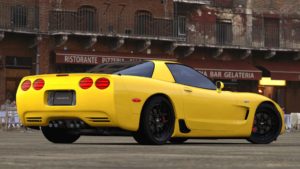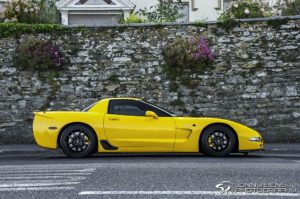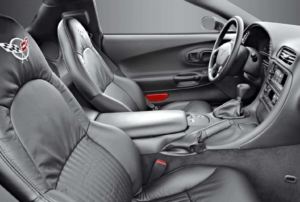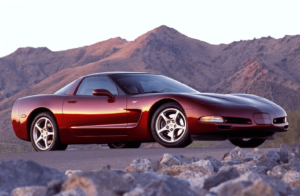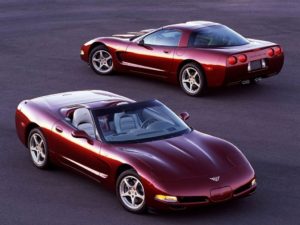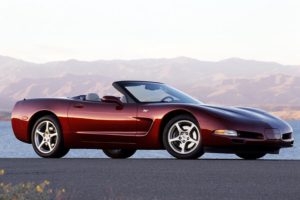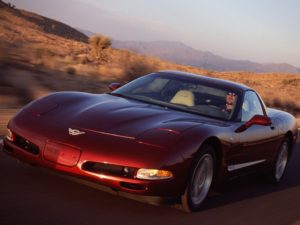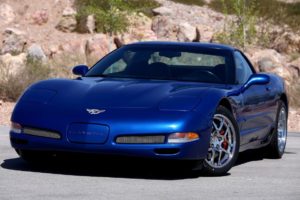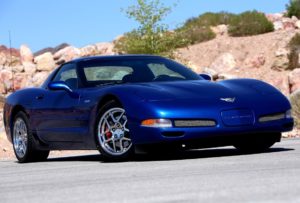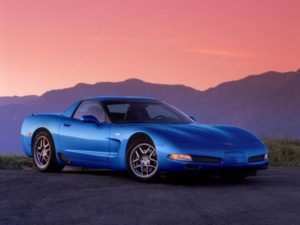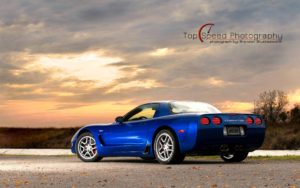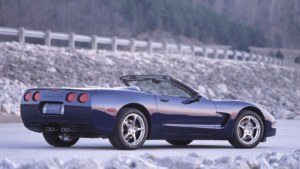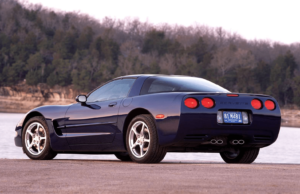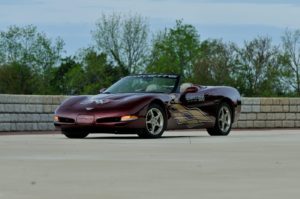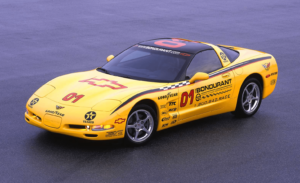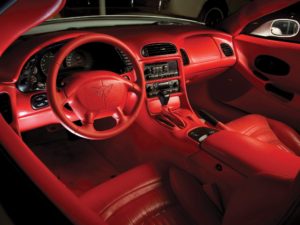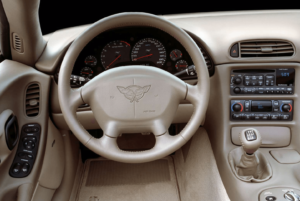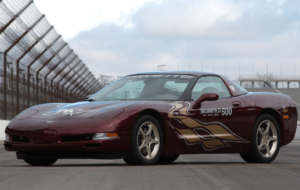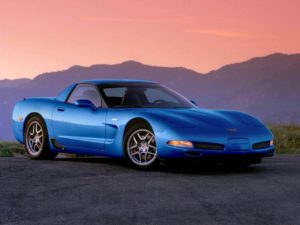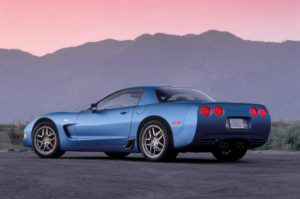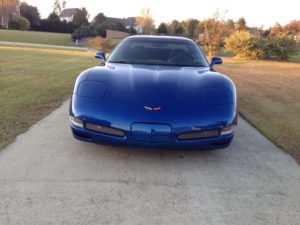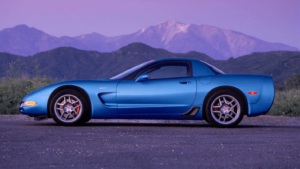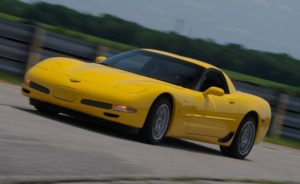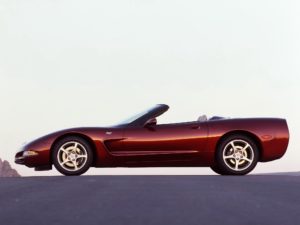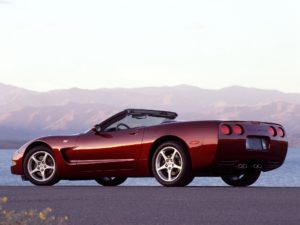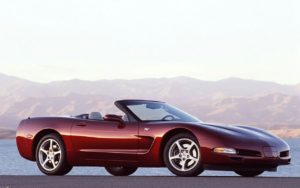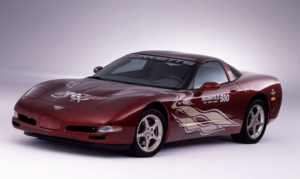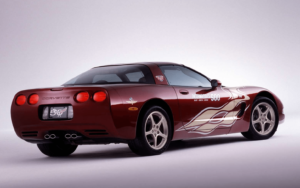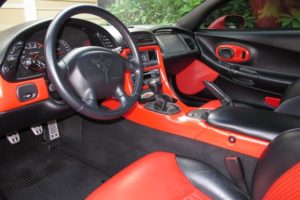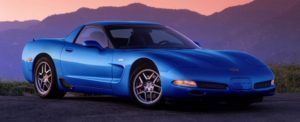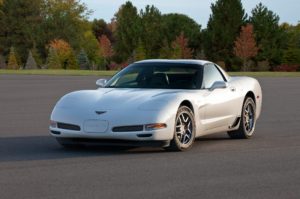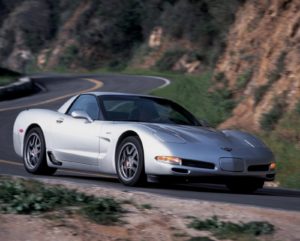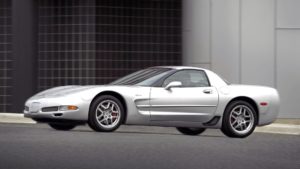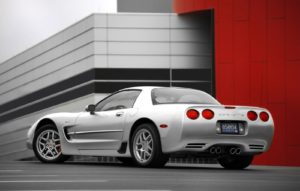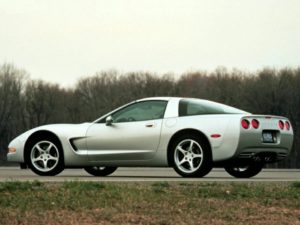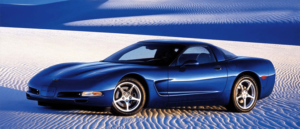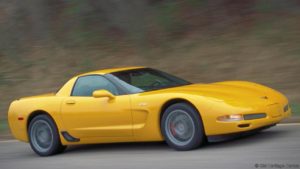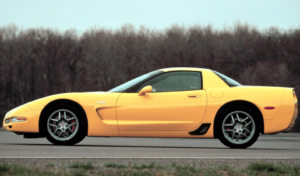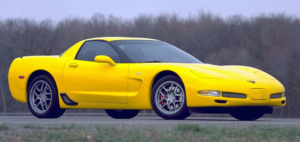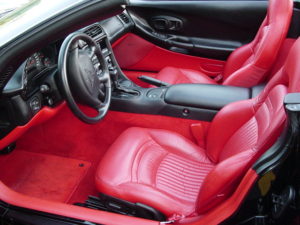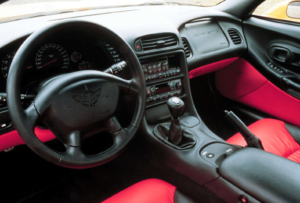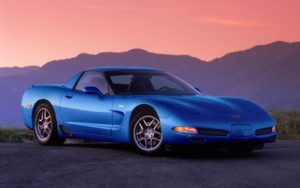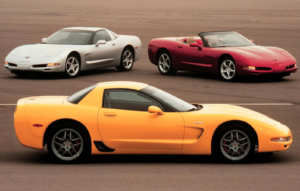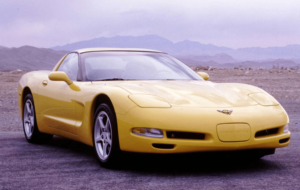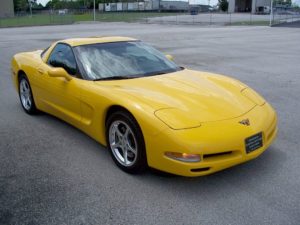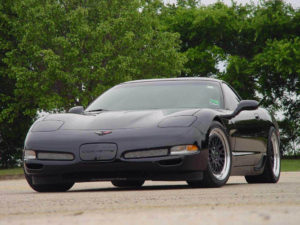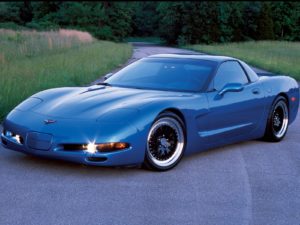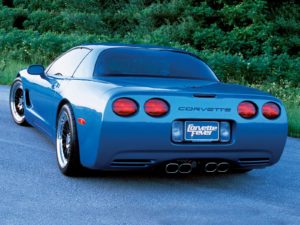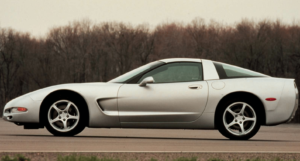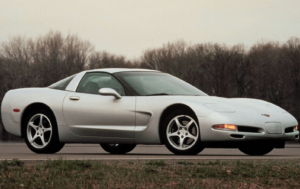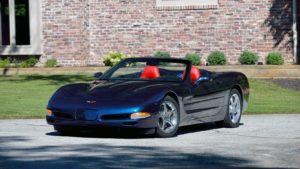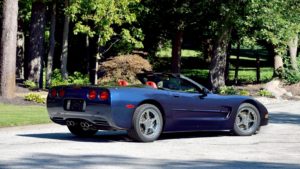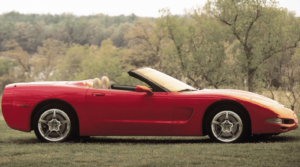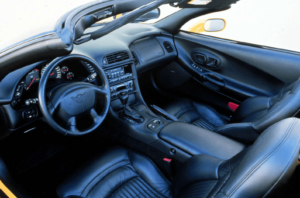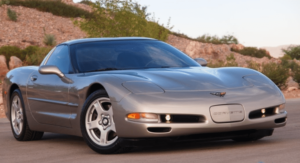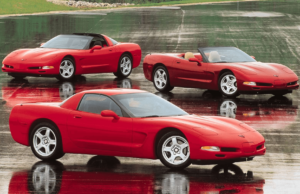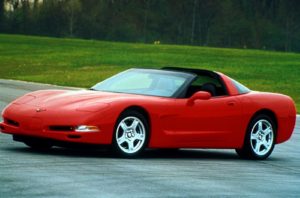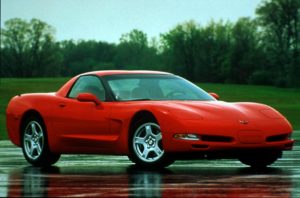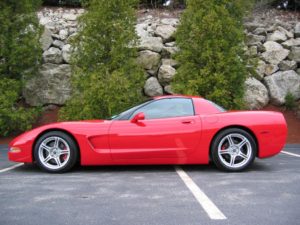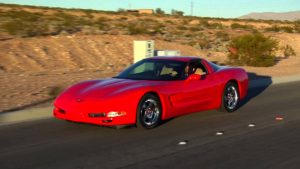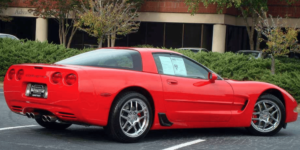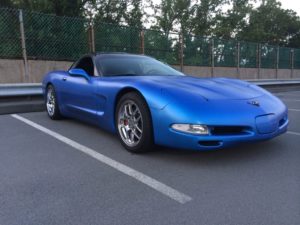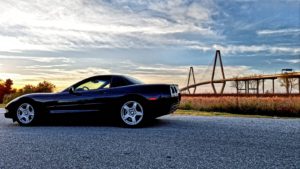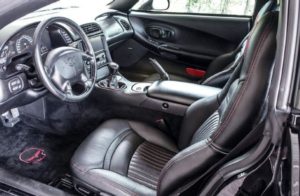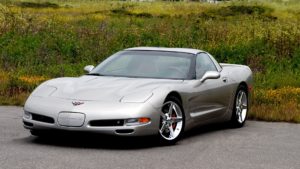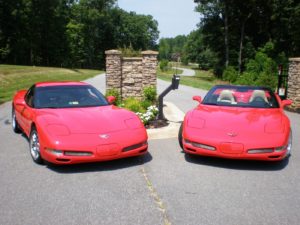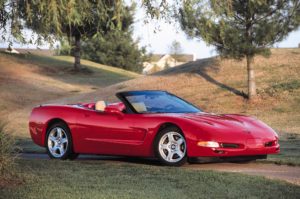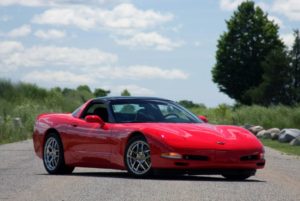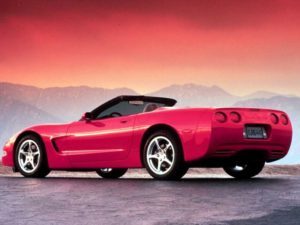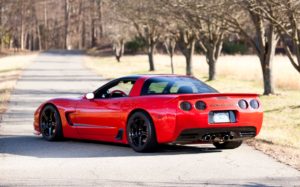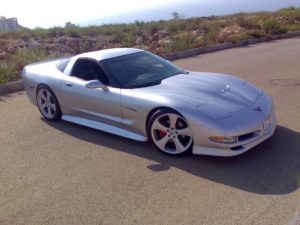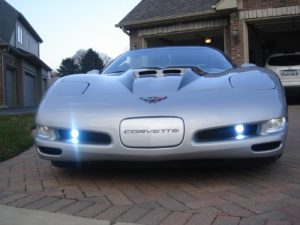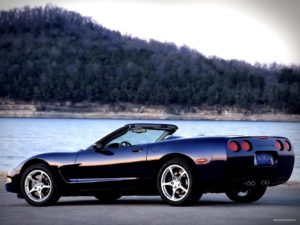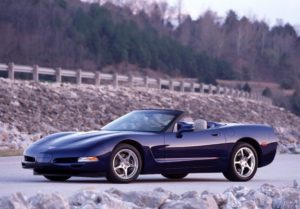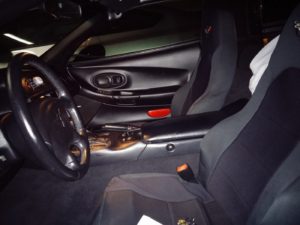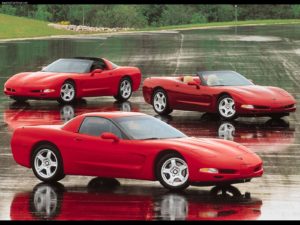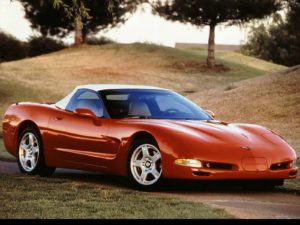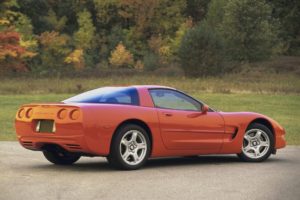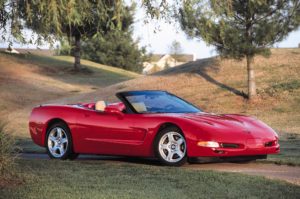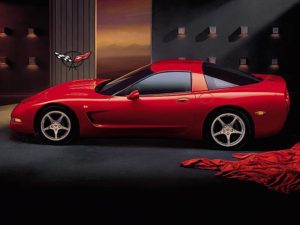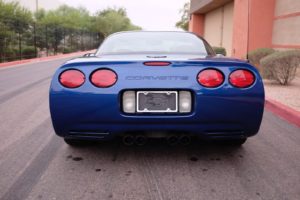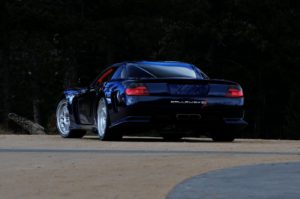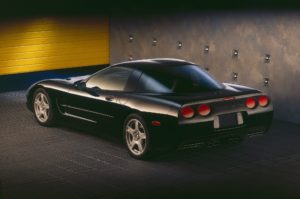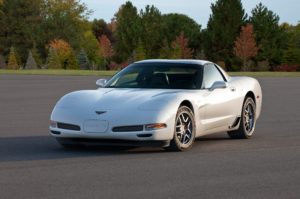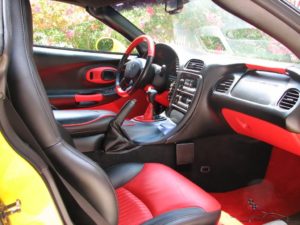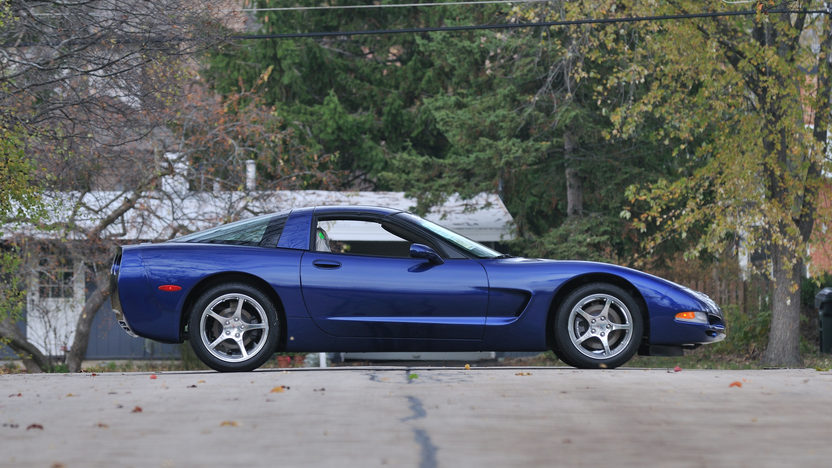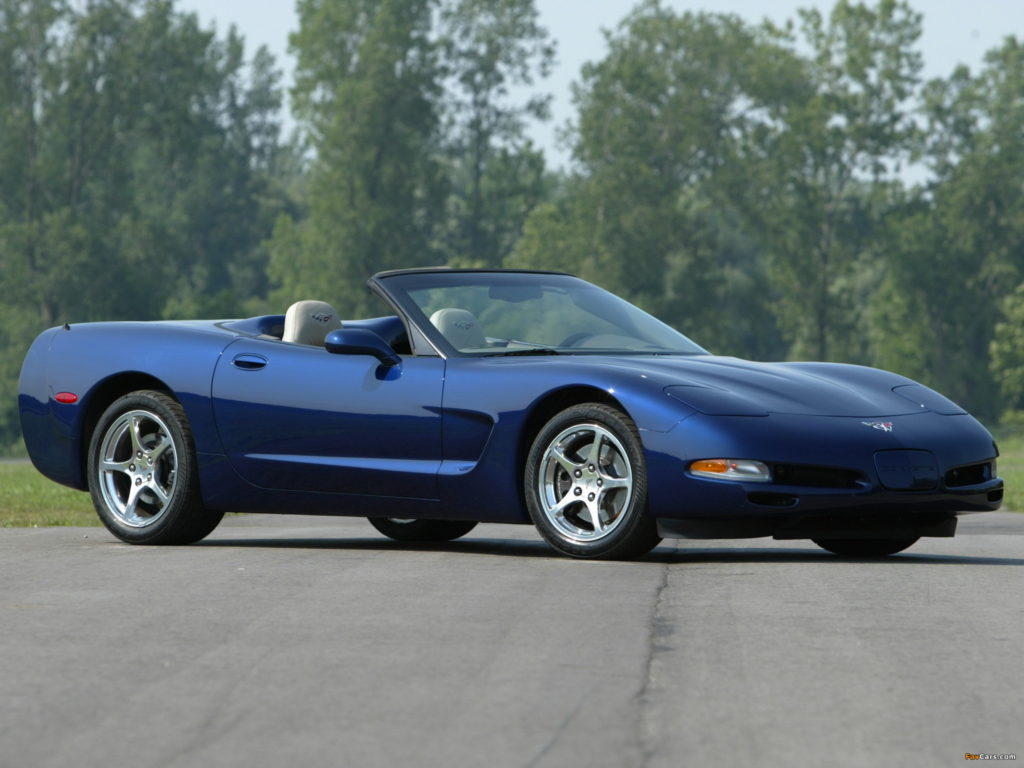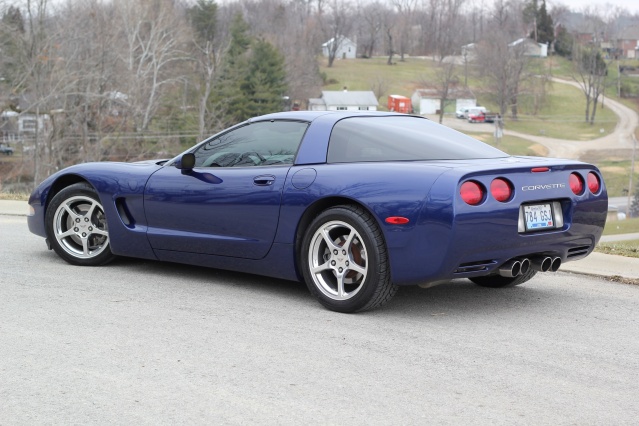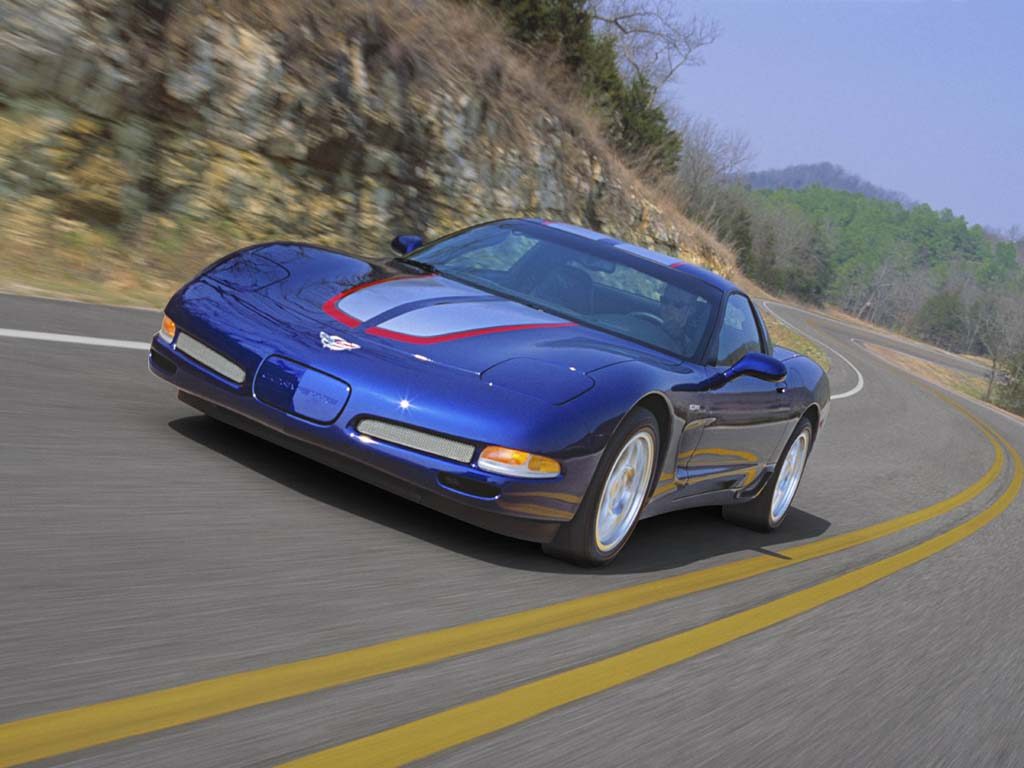The arrival of the 2004 Chevy Corvette brought with it the official announcement that, as far as factory production of the C5 was concerned, this would be the final year for the fifth-generation model. Despite the growing rumors that an all-new Corvette was on the way, it had been decided that Chevrolet would continue to produce the Corvette so as not to leave a production gap (as they had in 1983) while ramping up production of a next-generation C6 Corvette.
Pricing: $44,535 (Coupe), $51,535 (Convertible), $52,385 (Z06 Coupe)
Engine options: LS1, 346C.I., 5.7 Litre V8 (Coupe/Convertible) LS6, 346C.I., 5.7Litre V8 (Z06)
Transmission: 4-speed automatic (standard), 6-speed manual (optional)
Top speed: 171mph (Z06), 175mph (coupe, convertible)
Units Produced: 34,064
Available Colors: Quicksilver, Electron Blue, Speedway White, Black, Torch Red, Millenium Yellow, Medium Spiral Gray, Anniversary RedArctic White, Lemans Blue (Comm. Edition), Black, Machine Silver, Torch Red, Millenium Yellow, Magnetic Red II, Medium Spiral Gray.
Highlights of the year:
However, General Motors, looking to commemorate the spectacular accomplishments that had been achieved by the C5 Corvette both on and off the race track during its eight-year production run, also decided to introduce a special Commemorative Edition Corvette for its final model year.
The Commemorative Edition 2004 Corvette was specifically designed to pay homage to Corvette’s successful return to racing. All the Commemorative Edition 2004 Corvettes were finished in a striking LeMans Blue paint with red-edged silver stripes that adorned the hood, roof and rear deck lid. Special “LeMans 24-hours” emblems featuring Corvette’s iconic crossed-flags trademark appeared on the nose and the tail of the car, and a matching emblem was embroidered into the headrests of the custom shale color interior leather seats
The high-performance Z06 included in the corvette package benefited from suspension tuning for 2004 based on extensive testing at Germany’s fabled Nurburgring racetrack and General Motors Milford Proving Grounds. The goal was improved ride quality, but the revised Z06 suspension also felt ‘more tied down, more glued to the road,’ according to Chevrolet. Sporting a C5-R Le Mans stripe, the Z06 Commemorative Edition gets a lightweight carbon fiber hood.
Standard equipment included dual-zone climate controls, fog lamps, sport seats, four-wheel-disc brakes with ABS, a driver information center, remote keyless entry, stainless steel exhaust with chromed quad outlets, retractable headlights, Bose speakers, 6-way power seats with leather upholstery, extended-mobility (run-flat) Z-rated tires, traction control with Active Handling, and cast alloy wheels. The coupe came with a parcel net and luggage shade. Child Restraint Attachment System (CRAS) hooks were provided in the passenger and the passenger-side airbag cou;d be manually shut off while carrying children. The Z06 hardtop added a head-up instrument display, titanium exhaust, a tire inflator kit for its Goodyear Eagle F1 tires, and forged alloy wheels. The six-speed manual was the only transmission offered.
There was really nothing quite like the Corvette. Driving each of the C5 models, whether a coupe, convertible, or the Z06, was always a visceral experience. Most powerful was the Z06 hardtop, with 405 horsepower on tap. The coupe was the most practical, offering nearly twice as much trunk space as the convertible or hardtop models. The convertible was considered as sometimes the most enjoyable, however. Motoring along on a warm summer night in a Corvette with the top down could be a peak experience
For the past 50 years, the Corvette had been America’s sports car, a U.S.-production two-seater capable of real racetrack performance. The Corvette endured because it has always represented a performance value. The C5 doid this in a big way, boasting performance and handling matched only by the Dodge Viper, Porsche 911, and various exotics, all of which were far more expensive.
And successful it had been. The C5 was one of the most respected and most celebrated of all Corvettes to date, and it had the awards to prove it. Besides winning an unprecedented number of trophies on the podium at such venues as Leguna Seca, Road Atlanta, and even the coveted 24 Hours of LeMans, the production model Corvette had also been named “Automobile of the Year” (Automobile Magazine, 2001), “North American Car of the Year”, “Car of the Year” (Motor Trend, 1998), “A Best Buy Amongst Sports Cars (Consumer Guide Best Buy), and perhaps most impressive of all, it had ranked in Car and Driver’s annual 10 Best List in 1998, 1999, 2002, 2003, and 2004.
Another measure of the C5’s overall success during its production run was the large number of units that were produced year after ear. If one measures success in terms to total units manufactured and sold, then Corvettes numbers still reigned supreme with nearly a quarter-million C5 Corvettes being sold in just an eight-year window – which worked out to approximately 34,000 Corvettes per year
Photos of the 2004 Corvette:
Sources:
https://www.autoblog.com/buy/2004-Chevrolet-Corvette/expert-review/
https://www.corvsport.com/2004-c5-corvette/
https://www.corvsport.com/2004-c5-corvette-image-gallery/
